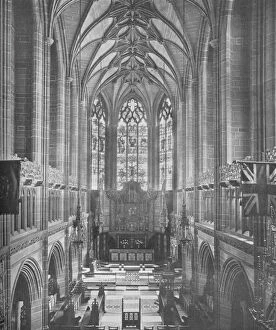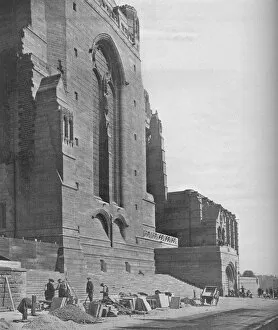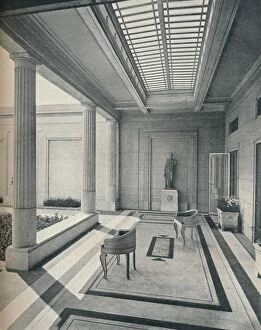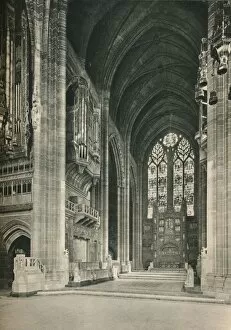Sir Giles Gilbert Scott Collection
Sir Giles Gilbert Scott was a renowned British architect who left an indelible mark on the architectural landscape of his time
All Professionally Made to Order for Quick Shipping
Sir Giles Gilbert Scott was a renowned British architect who left an indelible mark on the architectural landscape of his time. From iconic telephone kiosks to grand cathedrals, his creations were diverse and awe-inspiring. One of Sir Giles Gilbert Scott's most recognizable designs is the classic red Telephone Kiosk, which became synonymous with British culture. These small structures dotted the streets, providing a means of communication for people across the country. In 1926, Sir Giles Gilbert Scott unveiled another masterpiece - The Lady Chapel in Liverpool Cathedral. This stunning chapel showcased his meticulous attention to detail and mastery of Gothic architecture. Its intricate carvings and stained glass windows left visitors in awe. The rebuilding of Waterloo Bridge in London was yet another testament to Sir Giles Gilbert Scott's talent. Completed in 1934, this bridge stood as a symbol of resilience and progress after its predecessor was destroyed during World War II. The elegant design seamlessly blended functionality with aesthetic appeal. Not limited to large-scale projects, it also designed houses that exuded elegance and sophistication. One such example is the House in Grosvenor Road Westminster - The Stoa Looking West, showcasing his ability to create harmonious living spaces that complement their surroundings. Liverpool Cathedral served as a canvas for Sir Giles Gilbert Scott's visionary ideas. With its southeast transept completed in 1926, he added another dimension to this magnificent structure that dominated the city skyline. His genius brought together form and function effortlessly. Another house along Thames Embankment stands as a testament to his architectural prowess; it showcases timeless beauty combined with modern conveniences – a hallmark of his work throughout c19th-century Britain. From afar or up close, Liverpool Cathedral never fails to impress viewers with its grandeur and splendor thanks to Sir G. Gilbert-Scott’s vision realized in 1924 when he undertook this monumental project. The General View from Memorial Transept offers a breathtaking sight that captures the essence of his architectural brilliance.










